James Swallow has been writing Star Trek fiction professionally for the past several years, and has been working in the Trek world since selling two scripts to Star Trek: Voyager. His entry in The Fall, The Poisoned Chalice, is the penultimate entry in the crossover miniseries.
TrekCore’s editor Adam Walker caught up with the author this month.
![]()
TrekCore: What were your early Star Trek experiences? How did you become a fan?
James Swallow: I first got turned on to Star Trek in the 1980s when the original series was in reruns. I was a voracious science fiction, and a consumer of anything science fiction as a kid – I mean, I would read books and comics and watch every show and movie that came out, so when Star Trek came down the pipe, I was just like, “Oh, here’s some more cool stuff to get involved in!”
 It was just something really fond of, and then the movies came out – I think that Wrath of Khan was the first time I saw a Star Trek movie in the cinema. I really enjoyed it, so I was a Trek fan from there on. After that, I got a little bit involved in fandom; I wrote for fanzines and helped run the Star Trek club in the UK for a few years. It just became part of my science fiction landscape, and I’ve had a strong love for it ever since.
It was just something really fond of, and then the movies came out – I think that Wrath of Khan was the first time I saw a Star Trek movie in the cinema. I really enjoyed it, so I was a Trek fan from there on. After that, I got a little bit involved in fandom; I wrote for fanzines and helped run the Star Trek club in the UK for a few years. It just became part of my science fiction landscape, and I’ve had a strong love for it ever since.
TrekCore: Your Trek career began with pitches to Star Trek: Voyager, including “One” and “Memorial.” What was that experience like?
James Swallow: Well, technically, my first paid Star Trek writing job came slightly before that, working as a journalist. I kind of parlayed my fanzine writing into a sort of professional entertainment journalist covering a lot of science fiction, and one of the first magazines I worked for was the official Trek magazine published here in the UK, Titan’s Star Trek Monthly.
I had a hankering to write fiction and be a scriptwriter in addition to being a journalist. When we were working on the magazine, a lot of the interviewers were interested in dealing with the stars of the show as we were all fans, but I was really interested in talking with the people who worked behind the scenes – writers, producers, story editors, script coordinators, and people like that.
I got to meet the people who were writing the shows, and I would occasionally sneak writerly kinds of questions into the interviews. I’d ask them about the episodes they wrote, like, “If there was a problem in Act Three, how would you deal with it?” They kind of realized that if I was asking those sort of questions, I was interested in the scripting process.
Eventually, I got to know a few members of the team, including Lolita Fatjo, who was working as a script coordinator for the show. She basically said, “Clearly you want to do this for a living, would you like to come in and pitch a few story ideas?” And, absolutely yes! It was almost like she held the door open, kind of looked the other way and let me sneak in.
And I started pitching for Voyager, which was a hellish, hellish experience! It’s just not fun at all. It’s like being on The X-Factor, you know, you come out and you sing your heart out and in ten seconds someone goes, “No, that’s terrible, off you go.” It doesn’t matter how hard you worked or how much you put behind it, if you don’t hit the right note, then you’re out the door. I think I must have pitched something like three or four hundred story ideas in the course of all the years that I was pitching for Star Trek.
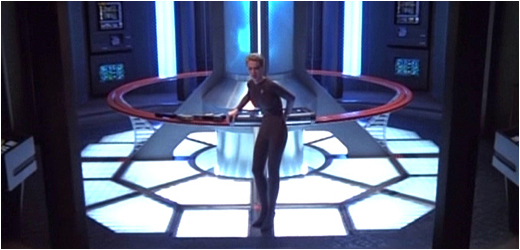 Swallow’s first Trek sale was Season Four’s “One.”
Swallow’s first Trek sale was Season Four’s “One.”
It started around the fourth season, and I pitched all the way through to the end; along the way I made two sales. So that gives you an idea of the seriousness of the high mountain you have to climb. I also pitched for a couple of seasons of Enterprise as well, but I never really kind of made the right connection with that. But that was my first work as a script writer, and it was terrific, it was almost like winning the lottery.
I could remember when I got the first story sold, which was for “One.” Lolita called me up and she said, “I wanted to be the one to call you to tell you this, you sold your story idea!” And I can remember, I had thought to myself, “If I ever sell a story I’ll be so excited and I’ll dance around the room,” and you know, and that’s not at all what happened. When she called me, I was just numb, I was like, “Oh, that’s great, yeah, brilliant…” I just had no reaction to it whatsoever, and it only kind of hours later that I suddenly thought, “Oh my god, I’ve just done this really cool thing!”
A couple of years later, when I sold the script for “Memorial,” that was far more amusing. It was a Friday night, and I had all my friends around playing game. The phone rang, and it was around eleven o’clock at night, and I thought, “Who’s calling me at this time of night?” And I went into the room, and I was like, “Who the hell is this?” on the phone – and the voice on the other end of the phone said, “Please hold for Brannon Braga.” And I was like, “What?!?”
My buddies followed me into the room and they were like, “Hey Jim, where’s the beer?” I just handed them a six-pack and went “Do not come back into this room! Take the beer and go!” And I’d had a little bit to drink that evening already, but I sobered up very quickly and got on the phone. “Hey Brannon, how’s it going?” We were on the phone for an hour or so, we had a story conference about how he wanted to see the story evolve, and we talked a lot about that.
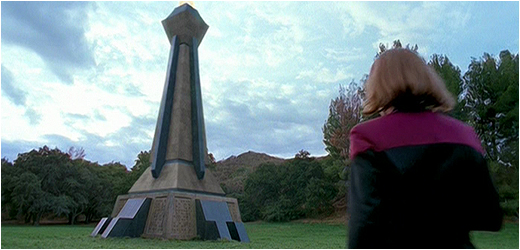 Season Six’s “Memorial” was the second episode sold to Trek.
Season Six’s “Memorial” was the second episode sold to Trek.
Afterwards, I told the other guys, “You’re never gonna believe what just happened to me!” And that was the second episode. And in a way, I felt like selling a second story was more important, almost, than selling the first one.
TrekCore: Because it’s clear it’s not a fluke by that point.
James Swallow: Absolutely. You know, I did not want to be a one-hit wonder; I didn’t want to just be a tourist. This was something that was really important to me, and getting that second sale really made me feel like, I was now a proper, professional writer. Now I can tell people that’s what I do for a living, and I’m fiercely proud of what came out of that.
TrekCore: Fast-forwarding now to recent times, you’re now writing fiction. Your newest release, The Poisoned Chalice, was one of the highlights of the 2013’s Trek releases. What can you tell us about how this entry in The Fall miniseries came together?
James Swallow: The Fall was the first time I’d worked on such a tightly-plotted kind of crossover event. I’ve worked in serial fiction stuff before – like the Warhammer 40K series, and the Horus Heresy series, which is like a long on-going set of novels – but this was the first time that we had a proper miniseries, you know, that had episodic moments that began in one book and handed off to another one.
Una McCormack, who wrote The Crimson Shadow, she put it best. She described it as like a relay race, each writer would pick up the baton from the one before them and then hand it on to the next. It was Margaret Clark who came to me and said, “Look, we want you to do a book in this series, and this is how we’re going to do it.”
“It’s based around this massive, major political event that takes place in the Federation,” she said. “We’re going to start with this, and then we’ll have the shockwaves resonate out across the current Star Trek universe – and we’d like you to write the Titan story.” And I had so much fun with the Titan crew when I wrote Synthesis a few years earlier, so I knew I’d love to do this!
 ‘The Poisoned Chalice’ is the penultimate entry in ‘The Fall’ miniseries.
‘The Poisoned Chalice’ is the penultimate entry in ‘The Fall’ miniseries.
It’s a very different kind of Star Trek novel as well, because a lot of the previous Titan books have been concentrating on the exploratory new-life-new-civilizations style of Star Trek, whereas The Poisoned Chalice is very much about politics and about the machinations of the Federation and Will Riker being put into a situation that he really doesn’t like.
In fact, that’s kind of the watchword for the whole novel – the whole crew is being taken out of their comfort zone and put into situations that they’re not used to. And for me as a writer, that was very challenging, and a lot of fun. And at the end of the day, it’s just great to work with such a talented team of people like David R. George, Una McCormack, Dayton Ward, and Dave Mack.
All of those people are all writers whose work I enjoy and I respect, and getting to work with them… everybody brings their A-game, you know, because nobody wants to be the one who lets the team down. At the end of it, we’re all trying to deliver the best story we possibly can – and I think that at the end of it, we all did a great job with The Fall. I’m very, very proud to have been a part of it.
TrekCore: What can you tell us about the direction the Titan series might take going forward after the changes made in The Fall?
James Swallow: Well, I think Dayton picks up that thread a bit in Peaceable Kingdoms, the last book in The Fall, about the way that the Federation has kind of lost sight of stuff a little bit – they’ve been battered by the Borg, the Typhon Pact, and there’s been all these political machinations. I think we’re going to go back to some of the more traditional mode of what Star Trek is, which is about going to the strange new worlds and exploring all the cool stuff out there.
TrekCore: You have also written a couple of terrific stories set in the “Lost Era” – Terok Nor: Day of the Vipers and Cast No Shadow.
James Swallow: Well, one of the great things about doing Star Trek novels is that we get to kind of fill in the gaps, and there’s a lot of interesting sort of lacunae of narrative in the Star Trek universe where we can tell stories. With Day of the Vipers, that was actually brought to me by Marco Palmieri, who was the editor at the time, and he told me that there was going to be this two book series that was coming out set during the Cardassian Occupation of Bajor, but they wanted a book to fit before it.
That was why Day of the Vipers appeared as this story before the story, and why it didn’t involve many of the familiar characters. There’s a very big cast of supporting characters and new characters in there. I had a very free hand with that, and it was fun to fill in that story about first contact between the Bajorans and the Cardassians and the way that everything kind of shaked out from that.
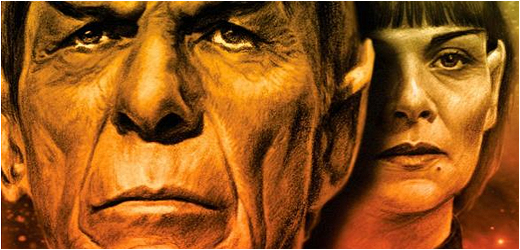 The traitorous Valeris returned in 2011’s ‘Cast No Shadow.’
The traitorous Valeris returned in 2011’s ‘Cast No Shadow.’
With Cast No Shadow, I had a hankering to write for what I’ve always called the “maroon tunic” era of Star Trek. I enjoyed that a lot, and back in the day when I used to play pencil and paper role-playing games, that was the Star Trek era that I liked to play in. I had an idea kicking around in my head for a while about Valeris from The Undiscovered Country – we saw her led away in handcuffs at the end of the film, but I never thought we got enough backstory about her.
She’s a Vulcan, you know, and she could be around in the Next Generation era in prison somewhere; I realized that her timeline synced up really well with Elias Vaughn from the Deep Space Nine novels, who was just beginning his Starfleet Intelligence career – you put those two in a room together and interesting stuff is bound to happen. It’s a fun espionage thriller; the Lost Era is a lot of fun to write in.
TrekCore: Are you interested in revisiting that period of Trek history, or any other era?
James Swallow: I think it would be interesting to do something maybe set during the Tzenkethi War, because we’ve heard a little bit about that, and about Sisko’s involvement there. I would also really like to do a Star Trek novel set towards the end of the original five year mission. You know, the, go back to proper yellow, red, and blue uniform era.
But the thing about Star Trek books is, you know, it’s an embarrassment of riches. There’s such a huge universe out there, and there’s so many different places you can tell stories in – it’s actually quite difficult to sit down as a writer and go, how do I narrow this down? How do I tell a story that hasn’t already been told a hundred times over in the Star Trek universe? How do you bring something new and interesting to it? It can be very daunting, but once you hit the mark right and you get into it, it’s great fun!
TrekCore: You wrote an e-book novella earlier last year – The Stuff of Dreams – which made for an entertaining, ‘television-length’ story. How do you approach writing a shorter story in comparison to a full-length novel?
James Swallow: Yeah, that one was a lot of fun! I’ve never really had much experience with novellas, and again, Margaret Clark came and asked me to do a TNG story for them. I wanted to follow up on this hanging thread from Star Trek: Generations – the Nexus. I remember watching the Nexus kind of float off into space at the end and thought to myself, “What, they’re just going to leave this dangerous thing out there?” This thing lets you travel through time, and into a weird kind of alternate dimension – Starfleet wouldn’t just leave that and let it float off!
I had this idea about maybe they’d send a science vessel after it, because that’s the kind of thing Starfleet would do – monitor it and try to figure out more about it. So I decided to have the Enterprise meet up with the science vessel and stuff starts to go wrong. It became a story about things from the past, and whether you can let go of them, and having Picard face stuff from his past in a different way.
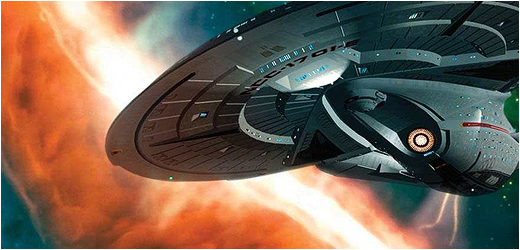 ‘The Stuff of Dreams’ features a second encounter with the mysterious Nexus.
‘The Stuff of Dreams’ features a second encounter with the mysterious Nexus.
With the novella length, you immediately have to take a different structure to the way you tell a story. I think if you’re not too careful when you’re a novelist, you can become very verbose if you have a big page count, you take forever. If you’ve got a short story, that’s good for an experimental way of telling a story, or telling a very impactful, very dynamic tale in a short period. A novella fits in between both of those things, and as you said, it does kind of lend itself well to almost a story that has the shape of an episode. That was what was in the back of my mind, you know, to make this feel like a Next Generation episode – and I was very pleased with the way it came out at the end.
TrekCore: Do you have any current projects in the Star Trek universe on the go at the moment that you could tease for our readers?
James Swallow: Yeah, kind of – right now, I’m in discussions with Pocket Books about two new novels. We haven’t a brokered a contract yet, and it’s all kind of up in the air and I’m still sort of putting together story ideas.
One of them, I hope will be that classic Trek novel I was talking about, something that will sort of harken back to my favorite episodes of Star Trek, like “The Doomsday Machine,” “The Enterprise Incident,” and “The Immunity Syndrome.” The really big, brassy classic Trek stuff. I’d really like to write something like that, in that kind of tonality.
The other idea we’re talking about is another Titan novel, picking up with the crew of the Titan and carrying on the story with them, taking them back to their sort of exploratory nature and getting into that kind of storytelling. That’s still kind of in flux right now, but hopefully if that goes ahead, that’ll be something that will pick up from the end of Absent Enemies, which is John Jackson Miller’s e-book story coming out later on in the year. But again, there’s nothing confirmed as yet.
Either way, I certainly am not done with Star Trek. I describe it to my friends as it’s like wearing a pair of comfortable shoes. Once I put them back on, I just feel like, “Aw, yeah!” I just connect with Star Trek in a way that I don’t with any other universe I write in, it just feels like it’s coming home every time.
TrekCore: Brilliant! Thank you very much, James, it was great fun talking to you.
James Swallow: I’m always happy to do it!
James Swallow can be found on Twitter and at his website.
![]()
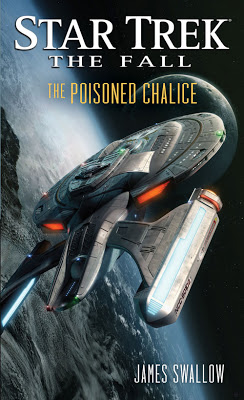 |
Order Star Trek The Fall: The Poisoned Chalice |
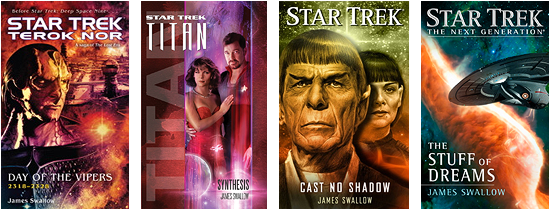 |
|||
| Amazon US Amazon UK Amazon DE |
Amazon US Amazon UK Amazon DE |
Amazon US Amazon UK Amazon DE |
Amazon US Amazon UK Amazon DE |



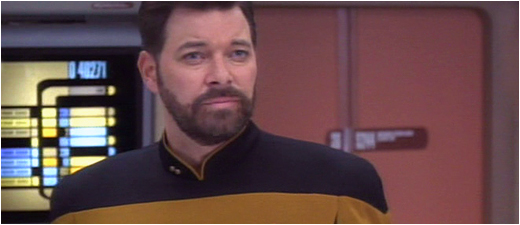 A long-forgotten face returns: Will Riker’s transporter duplicate.
A long-forgotten face returns: Will Riker’s transporter duplicate.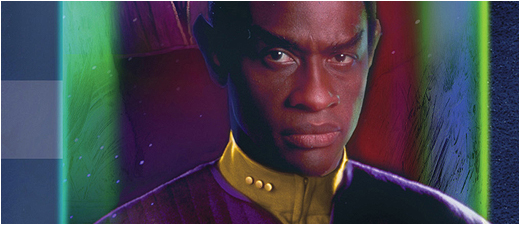 Tuvok becomes a surprisingly compelling character under James Swallow’s care.
Tuvok becomes a surprisingly compelling character under James Swallow’s care.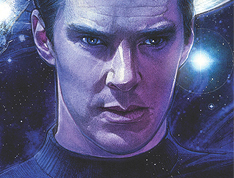
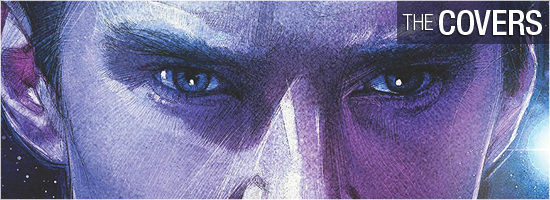
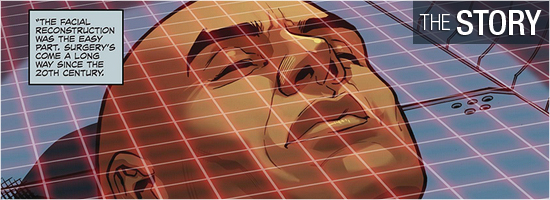
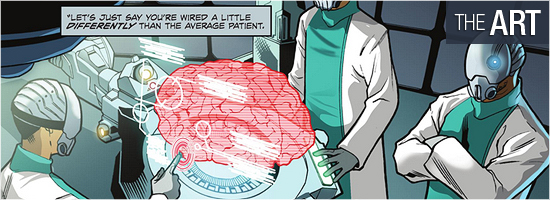
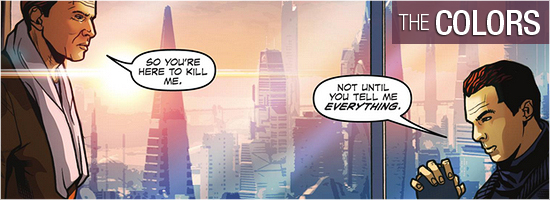
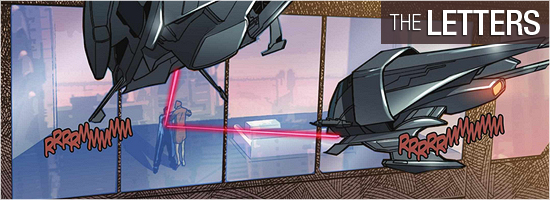
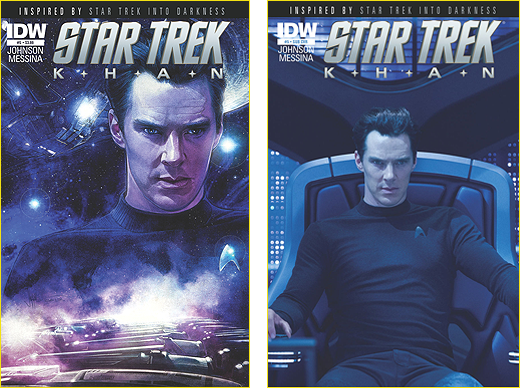
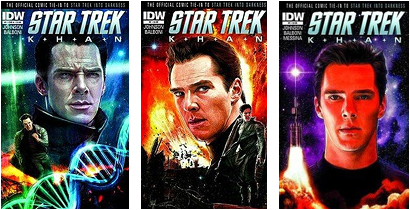
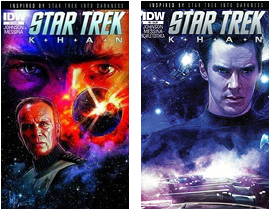
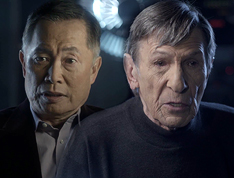

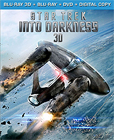
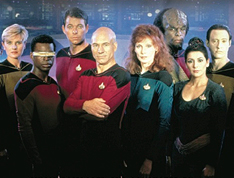
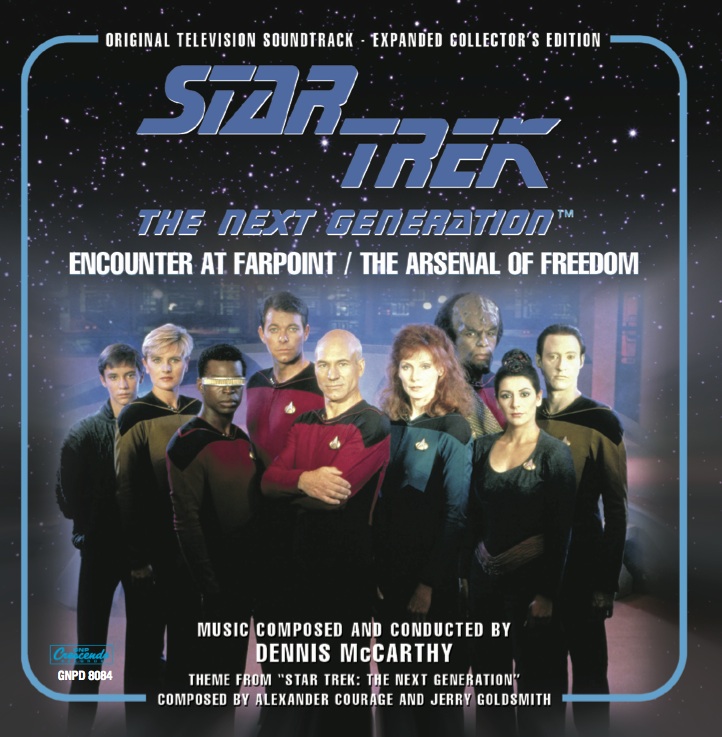
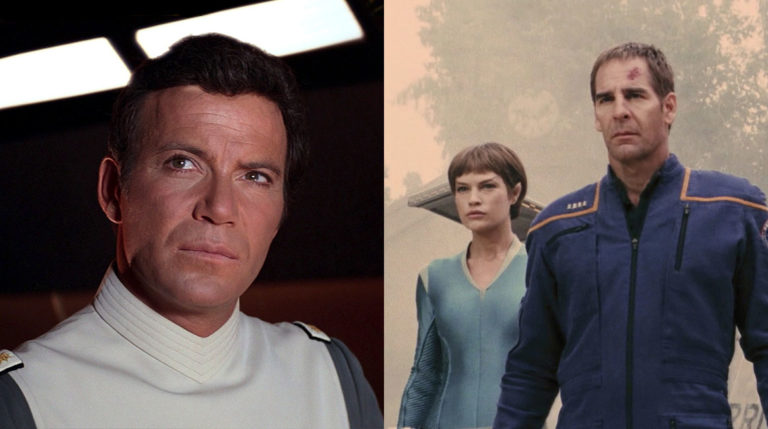
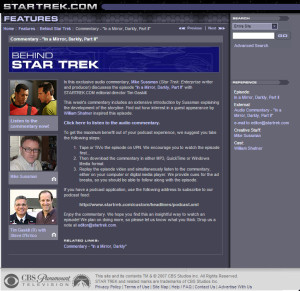
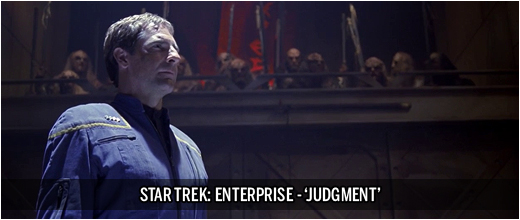



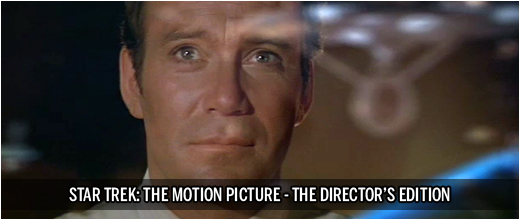

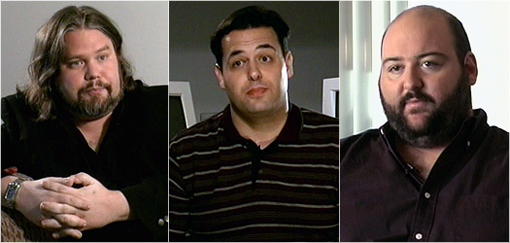 Dochterman, Matessino, and Fein offer compelling conversation for the entirety of the film.
Dochterman, Matessino, and Fein offer compelling conversation for the entirety of the film.
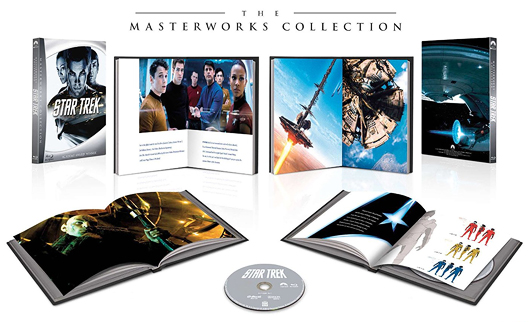
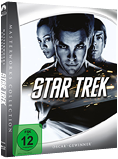

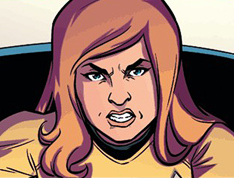
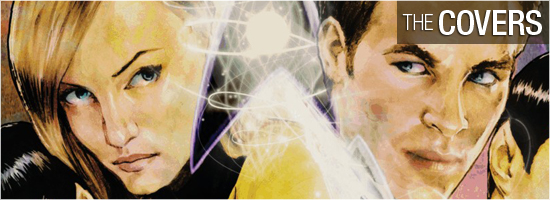
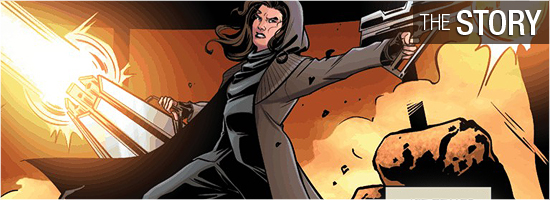
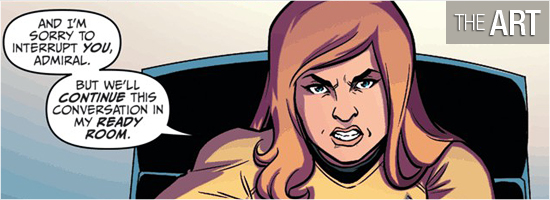
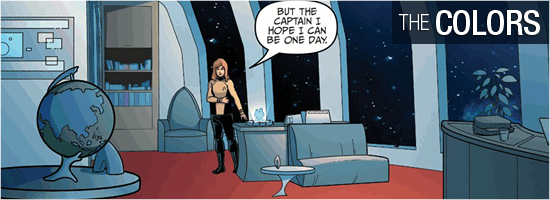
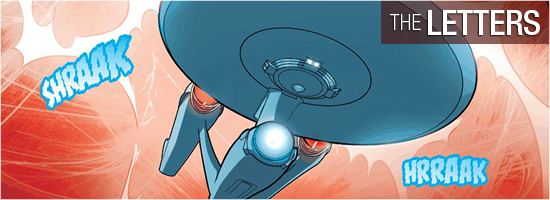
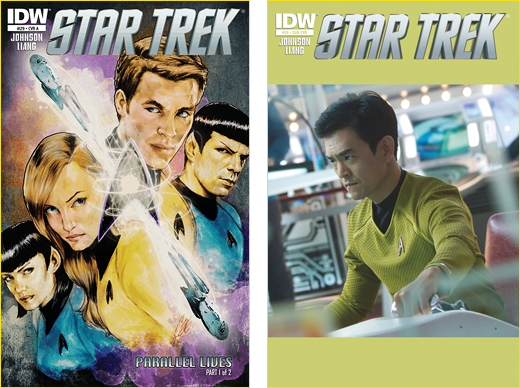
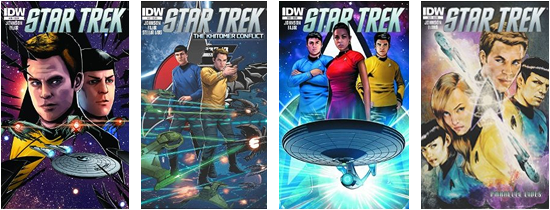
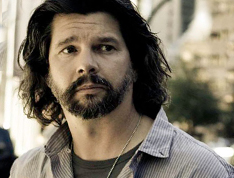
 “I think its home and its heart is really in television. That’s really what Star Trek is – the core concept is really a TV show. I think the features are good and I really admire what J.J. Abrams has done with the last two films – I think it’s great – but the heart and soul of that franchise demands a return to television.
“I think its home and its heart is really in television. That’s really what Star Trek is – the core concept is really a TV show. I think the features are good and I really admire what J.J. Abrams has done with the last two films – I think it’s great – but the heart and soul of that franchise demands a return to television. 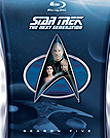
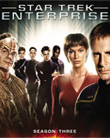
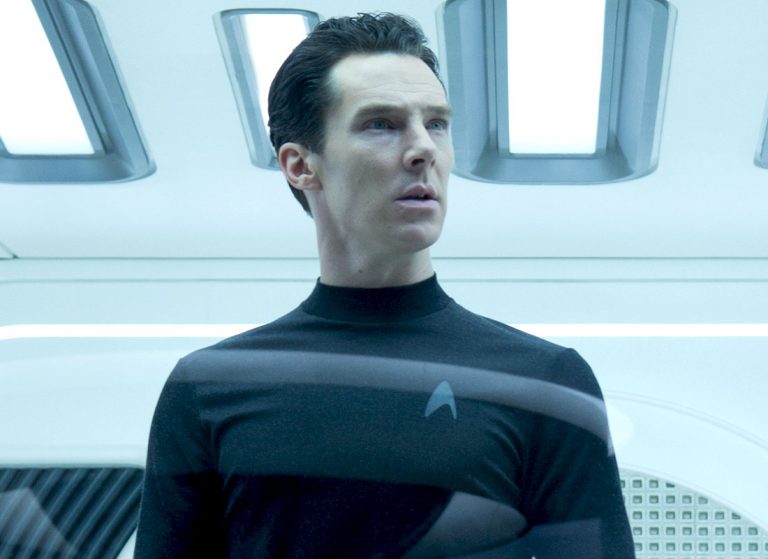
 I don’t try to maintain the mystery box… [but] I do think it’s a mistake to ruin stories for audiences,” the director said. “In [Into Darkness], fans of the series are aware that he’s either Khan or not, so it was probably a mistake not to just say he was Khan and get past it.
I don’t try to maintain the mystery box… [but] I do think it’s a mistake to ruin stories for audiences,” the director said. “In [Into Darkness], fans of the series are aware that he’s either Khan or not, so it was probably a mistake not to just say he was Khan and get past it.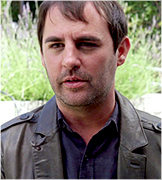 I do agree with [J.J.] that you want to preserve the storytelling experience for an audience,” Orci said. “You don’t want to give away twists, and we designed it as a twist. Alex [Kurtzman] and I, though, like to be very transparent about the process and things that are going on…
I do agree with [J.J.] that you want to preserve the storytelling experience for an audience,” Orci said. “You don’t want to give away twists, and we designed it as a twist. Alex [Kurtzman] and I, though, like to be very transparent about the process and things that are going on…